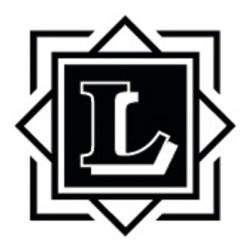Analysis
The claimant was the sole corporate trustee of a trust created by a deed of settlement dated 5 November 1963 and made by a settlor for the benefit of his four children and their respective spouses and descendants. The defendants were two of the settlor’s surviving children, the widows of two deceased children and descendants to the fourth generation. As a result of deeds of appointment made on 28 March 1979 and 31 December 1982, each of the settlor’s four children became entitled to a life interest in their respective one-quarter shares of the trust fund, with reversionary life interests thereafter for their respective spouses and vested or contingent interests in remainder as to both capital and income for their respective descendants. The settlor, who had been a successful builder and developer, settled a property portfolio which was now held either by A Ltd, a company incorporated under the laws of Guernsey, or by its wholly owned subsidiary, B Ltd, a company incorporated under the laws of the British Virgin Islands. The claimant was indirectly entitled, through two nominee companies, to the entire share capital of A Ltd.
Following an inheritance tax planning exercise, the share capital of A Ltd was reorganised such that the existing ‘A’ shares continued to be entitled to all the dividend income and a maximum capital value (in the event of sale or liquidation) of £10m, and new ‘B’ shares were issued, being entitled only to any capital value in excess of £10m, and allotted to the trustees of new discretionary trusts settled by each of the four children of the settlor. The property portfolio of A Ltd and B Ltd was managed until 27 February 2009 by C Ltd, a company incorporated under the laws of England and Wales. C Ltd received gross rental income from the property portfolio as managing agents and a substantial proportion of this was utilised, after ordinary maintenance works, for renovations and improvements. This improved the capital value of the property portfolio but adversely affected the income of the life tenants. It resulted in a high level of discord among the settlor’s surviving children and, following the removal of the second defendant as managing director, C Ltd came under the control of the first defendant, one of the four life tenants, who caused C Ltd to bring proceedings against A Ltd and B Ltd for reimbursement and other claims totalling £663,904. As a consequence, the claimant sought the directions of the court as to what it should direct A Ltd and B Ltd to do in response to the claims brought by C Ltd.
Held (giving directions in anonymised form):
Although the action had been described by counsel as a quasi-Beddoe application, this epithet was more apt to mask the true issues which arose in this case. The principal issue was whether the court could properly regard the properties in the portfolio as if they were assets of the trust, counsel relying primarily on what they considered a proposition of law made by Deemster Kerruish in the High Court of the Isle of Man in Poyiadjis. The structure put in place following the inheritance tax planning exercise must take effect according to its terms and this meant that the property portfolio could not be treated as if it were an asset of the trust. In no sense could it be described as a sham; no one had argued that A Ltd and B Ltd held the property portfolio on bare trust for the claimant and no one had argued that there were any grounds or basis for piercing the corporate veil under the principles set out in Prest v Petrodel Resources Ltd. As for the decision of the deemster in Poyiadjis, this could be distinguished on the basis that it was directed to the specific circumstances of that particular case. The deemster had not identified and applied an independent principle of law, applicable to all cases, that a structure interposing limited companies could be ignored and that the court was free to treat corporate assets as if they were trust assets. If that was wrong and the deemster had applied such a principle of law, it should not be followed as it seemed to be fundamentally wrong in principle and no English authority had been cited in support.
The court should instead follow the reasoning of Brightman J in Bartlett v Barclays Bank Trust Co Ltd and apply the duty of a corporate trustee in relation to the trust assets which were shares in two companies. On a basic level, as an ordinary trustee, the bank in that case was bound to act in relation to the shares and to the controlling position which they conferred in the same manner as would any prudent man of business. Thus, if facts came to his knowledge which told him that the company’s affairs were not being conducted as they should be or which put him on enquiry, he should take appropriate action; namely in the first instance making enquiry of and consultation with the directors and, in the last resort, convening a general meeting to replace one or more directors. On a second level, as the bank carried on the specialised business of trust management, it had a higher duty of care which it had failed to discharge as an experienced corporate trustee. Consequently, the claimant was under an obligation to familiarise itself with what was being done by the directors of A Ltd and B Ltd in respect to the claims made by C Ltd. Appropriate action involved seeking to persuade the directors to deal with the claims in a manner which was most favourable to the best interests of the trust. Any unwillingness on the part of the directors so to act could lead to the necessity for intervention through the claimant using its direct, or indirect, shareholding in A Ltd and B Ltd to replace the directors – provided that this was achievable under the laws of Guernsey and the British Virgin Islands. In the event of the directors holding a differing reasonable view, as a matter of principle the claimant could still intervene in the best interests of the trust by using its voting power to ensure that the directors preferred its own reasonable view. In this case, the best interests of the trust, given the existence of the ‘B’ shares, lay in maximising the income attributable to the ‘A’ shares in A Ltd.
It was common ground that there should be a mediation of the claims brought by C Ltd against A Ltd and B Ltd, and the claimant would have been obliged to intervene had the directors not been willing to participate in mediation. The parameters for settlement would be dealt with in a confidential judgment. As regards the question of how expenses should be borne as between capital and income, the arguments had proceeded on a false premise that the property portfolio was, or was to be treated as, an asset of the trust. Prima facie, the directors of A Ltd and B Ltd, acting in the best interests of those companies, were entitled to decide how to fund all sums (including costs) needed to dispose of the claim brought by C Ltd. They could do this either out of a reserve built up for this purpose or from future income or from a sale of properties in the property portfolio. There would be no duty on the claimant to intervene unless, given that the best interests of the trust lay in maximising income, the mode of funding either (i) threatened the ability to pay the existing life tenants’ annual income which they have hitherto been receiving or (ii) caused properties in the property portfolio to be sold unnecessarily. The claimant could not be blamed for failing to discharge its duty to intervene if the directors of A Ltd and B Ltd made a bona fide commercial decision in the best interests of those companies which fell within those two broad parameters. As regards the costs of obtaining directions, the only capital which the trust held was its shareholding, directly or indirectly, in A Ltd and B Ltd. It followed that, at the first stage, the costs must be paid by the claimant out of its dividend income stream as there was no other source of payment. It was impossible to see how there could then be recoupment for the consequential shortfall in the dividend income stream through resort to capital. Further submissions on this issue could be heard on a date subsequent to hand down.
<![CDATA[ JUDGMENT MR EDWARD BARTLEY JONES QC: Preamble [1] This is an open, non-confidential, judgment available to all the parties to this action and also to the public at large. Its contents are freely reportable. [2] However, for the reasons set out below, this judgment has been anonymised. Further, I make it clear to the …Continue reading "Gestrust SA v Sixteen Defendants [2018] WTLR 421"

